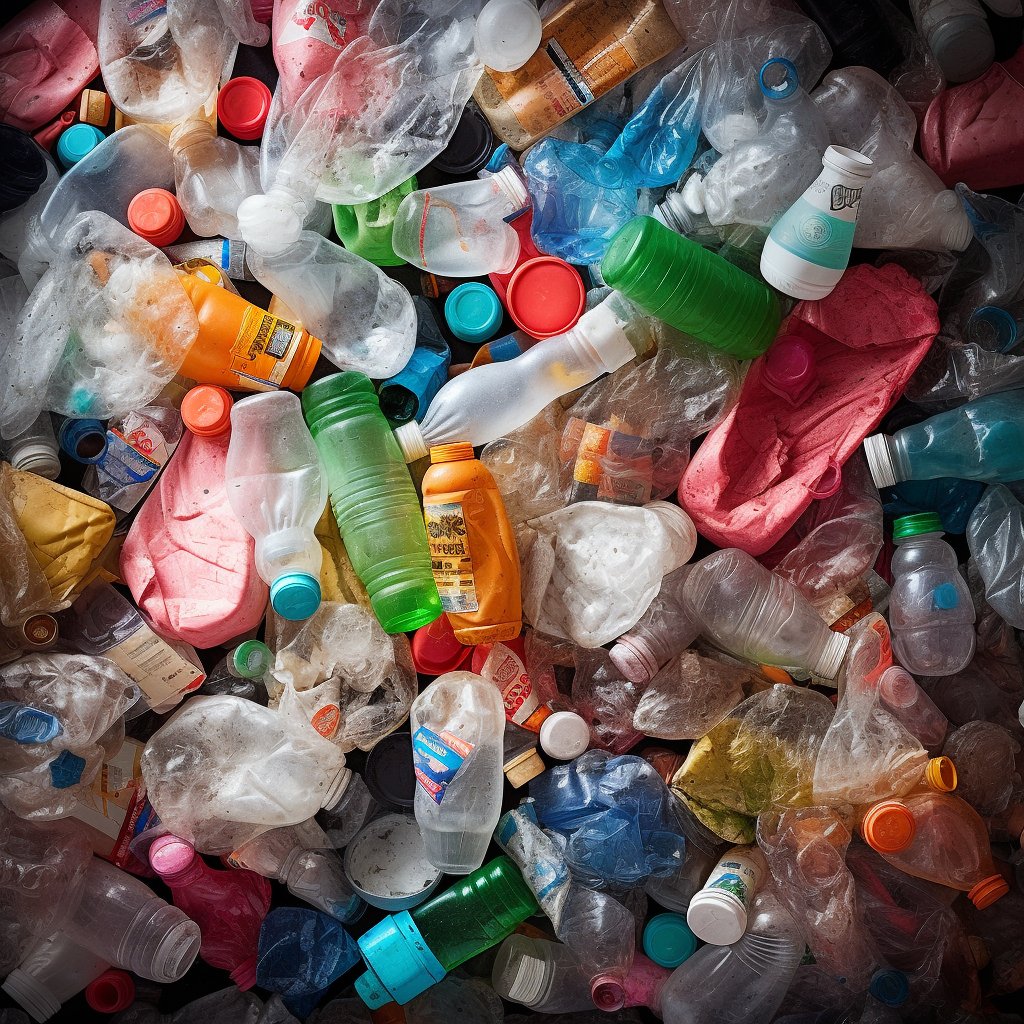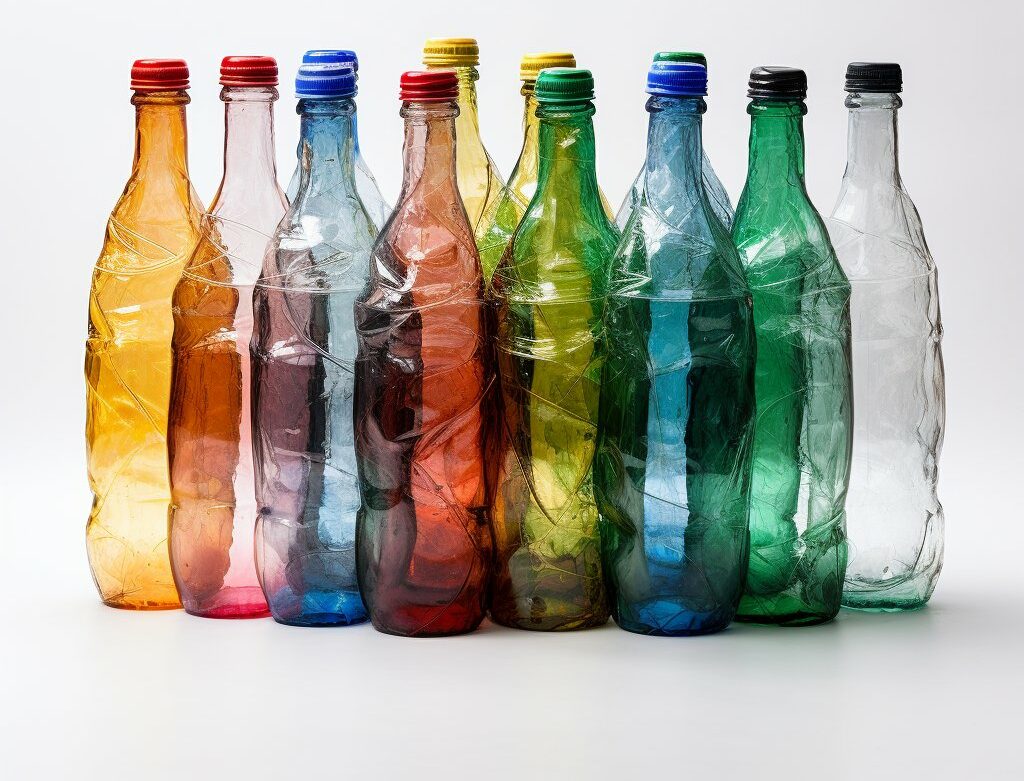How Recycling Reduces Carbon Footprints in the Plastics Industry
As the world becomes increasingly aware of the urgent need to reduce greenhouse gas emissions, companies and individuals are exploring new ways to reduce their carbon footprints. One of the most effective strategies for reducing carbon footprints is recycling, which conserves resources, reduces waste, and minimises emissions from producing new materials.

Industrial Usage of Recycling in Reducing Carbon Footprints
The industrial sector is responsible for significant carbon emissions, with manufacturing and production processes generating greenhouse gases. However, recycling can help reduce the carbon footprint of industries by minimising the need for virgin materials and decreasing the energy required to produce new products.
For instance, steel recycling can reduce carbon emissions by up to 58% compared to virgin steel production. Similarly, aluminium recycling can reduce carbon emissions by up to 95% compared to virgin aluminium production.
The use of recycled materials in the manufacturing process also reduces the amount of waste generated and conserves natural resources. For example, using recycled paper reduces water consumption by up to 60% and energy consumption by up to 40% compared to virgin paper production.
However, recycling in the industrial sector faces several challenges, such as the availability and quality of recyclable materials, the high cost of recycling equipment, and the need for more infrastructure for collecting and processing recyclables. Nonetheless, with proper policies, incentives, and public-private partnerships, recycling can become a viable solution for reducing carbon footprints in the industrial sector.
Application Areas of Recycling in Reducing Carbon Footprints
Recycling has various applications that can help reduce carbon footprints in different areas, such as packaging, construction, and transportation.
In packaging, recycled materials can be used to produce containers, boxes, and bags that are more environmentally friendly than their virgin material counterparts. For instance, a recycled plastic bottle generates 70% less carbon emissions than a virgin plastic bottle.
In construction, recycled materials such as asphalt, concrete, and insulation can produce building materials. This reduces the amount of waste generated and preserves natural resources while reducing carbon emissions. For example, using recycled asphalt reduces carbon emissions by up to 20% compared to virgin asphalt production.
In transportation, recycled materials can produce lightweight components, such as aluminium and carbon fibre, improving fuel efficiency and reducing carbon emissions. For example, using recycled aluminium in car manufacturing reduces carbon emissions by up to 17% compared to virgin aluminium.
Material Properties of Recycled Plastics in Reducing Carbon Footprints
Recycled plastics have properties that make them suitable for reducing carbon footprints. For example, recycled plastics are often less energy-intensive to produce than virgin plastics, reducing the carbon footprint of the manufacturing process.
Recycled plastics also have lower embodied energy, which refers to the energy required to produce, transport, and dispose of the material. Lower embodied energy translates to lower carbon emissions during the product’s life cycle.
Moreover, recycled plastics can be used in various applications, including consumer products such as toys, furniture, and electronics. For example, a recycled plastic chair generates 80% less carbon emissions than a virgin plastic chair.
However, the quality of recycled plastics can vary depending on the collection and sorting processes, which can affect their properties and limit their application in certain products.
Future Trends in Recycling and Reducing Carbon Footprints
The future of recycling and reducing carbon footprints looks promising, with emerging trends such as the circular economy and sustainable packaging leading the way.
The circular economy is an economic model that aims to eliminate waste and promote the use of renewable resources. This model emphasises product reuse, repair, and recycling to minimise waste and reduce carbon emissions.
Sustainable packaging refers to using eco-friendly materials and designs that minimise the environmental impact of packaging. This includes using recycled materials, reducing packaging size and weight, and improving recyclability.
In addition, new technologies and innovations are driving the development of more efficient and sustainable recycling processes. For example, chemical recycling technologies can break down plastics into their molecular
Market Price Developments and Global Impact of Recycling in Reducing Carbon Footprints
Various factors, including supply and demand, material quality, and the cost of collection and processing, influence the market price of recycled materials. The market prices of recycled materials have fluctuated over the years, with some materials experiencing a decline due to oversupply and lack of demand.
However, despite the fluctuations, the recycling industry has grown significantly over the past decade, with a global market size of over $300 billion in 2020. This growth is attributed to the increasing demand for eco-friendly products and the rising awareness of the environmental impact of waste and carbon emissions.
The global impact of recycling in reducing carbon footprints cannot be overstated. Recycling conserves natural resources, reduces waste generation, and minimises the energy required to produce new products. This, in turn, reduces the carbon footprint of industries and households and mitigates climate change.
Moreover, the recycling industry creates jobs and economic opportunities, particularly in developing countries where waste management is a significant challenge. According to the International Labour Organization, the global recycling industry employs over 18 million people, providing sustainable livelihoods and promoting social and economic development.
Recycling Reducing Carbon Footprints Around the World – Environmental and Economic Impact
Recycling significantly impacts reducing carbon footprints around the world, both environmentally and economically. Here are some examples of the impact of recycling in different regions.
North America:
The United States and Canada have well-established recycling programs that significantly impact reducing carbon footprints. Recycling saves energy, reduces greenhouse gas emissions, and conserves natural resources like water and minerals. According to the U.S. Environmental Protection Agency, recycling reduces greenhouse gas emissions by an estimated 200 million metric tons per year, equivalent to taking more than 42 million cars off the road.
In addition to the environmental benefits, recycling creates jobs and contributes to the economy. The recycling industry in the United States generated $110 billion in economic activity in 2019 and supported over 750,000 jobs.
Europe:
Europe has been at the forefront of recycling for many years, with countries like Germany and Switzerland having some of the highest recycling rates globally. In 2020, the European Union introduced a new Circular Economy Action Plan to promote sustainable growth and reduce carbon emissions. The plan includes measures to promote recycling, reduce waste, and promote the use of renewable resources.
Recycling in Europe has significant environmental and economic benefits, including reducing greenhouse gas emissions and conserving natural resources. According to the European Environment Agency, recycling one tonne of plastic saves 1.5 tonnes of CO2 emissions, and recycling 10,000 tonnes of plastic creates 36 jobs and generates €1.2 million in gross value added.
Asia:
Asia is the largest producer of plastic waste globally, and recycling has become an urgent environmental and economic issue in the region. Countries such as Japan and South Korea have well-established recycling programs, while others, such as China and India, are increasing their efforts to promote recycling.
Recycling in Asia has significant environmental benefits, including reducing waste and greenhouse gas emissions. According to the United Nations Environment Programme, recycling saves up to 3 tonnes of CO2 emissions. Recycling also creates economic opportunities, particularly in developing countries, where waste management is a significant challenge. In India, the recycling industry is estimated to create over 4 million jobs.
Africa:
Africa faces significant environmental and economic challenges related to waste management, with most countries needing adequate waste collection and recycling infrastructure. However, some initiatives aim to promote recycling and reduce carbon footprints in the region. For example, the African Circular Economy Alliance is a pan-African platform that enables circular economy practices, including recycling, to promote sustainable development.
Recycling in Africa has significant environmental and economic benefits, including reducing waste and creating jobs. According to the World Bank, improving waste management in Sub-Saharan Africa could create over 600,000 jobs and generate over $8 billion in annual revenue.
Reducing our carbon footprint:
Recycling is an effective strategy for reducing carbon footprints and promoting sustainability across various industries. By conserving resources, reducing waste, and minimising emissions associated with producing new materials, recycling can help us create a cleaner, healthier, and more sustainable future. While there are still challenges to overcome, such as improving infrastructure and increasing consumer awareness, we can all play a role in advancing the recycling movement and reducing our carbon footprints. By working together towards a common goal, we can positively impact the environment and create a better world for generations to come.
Recycling plays a vital role in reducing carbon footprints. Using recycled materials reduces waste generation, conserves natural resources, and minimises the energy required to produce new products. The recycling industry has grown significantly over the past decade, and its future looks promising. Governments, businesses, and individuals must collaborate to promote recycling and reduce carbon footprints.






